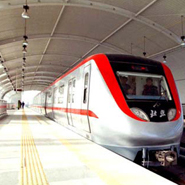Rome-Naples High Speed Train: Impacts on Modal Split
Abstract
Region socioeconomic development perspectives mostly depend on the presence and the efficiency of transport and communication infrastructures. As regards interregional connections, the limits of air transport are increasingly evident and are strongly affected by the time to reach the airports, the check-in and boarding operations. On the other hand, territory has run out of its capacity of undergoing road traffic increase, especially near big cities and along the main directrixes. The advent of the High Speed Transport can change the relative accessibility of urban region. In many European countries the data on the implementation of High Speed linkages and modal split show that the High Speed Rail networks represents a competitive alternative in comparison to air and road transport. The data seem to demonstrate that the implementation of High Speed Railway infrastructures, on distances needing a travelling time lower than three hours, produces a considerable modal division as well as affects, sometimes in a strong way, the habits of work and residence. In that scenario, the implementation of the first High Speed railway linkages in Italy seems to prefigure an ever-increasing use of HS services in comparison to other transport modes. This article is targeted to compare, in terms of costs, travelling time and travel comfort, the different transport modes on the Rome-Naples connection and aims at pointing out the possible elements affecting the modal re-balance of the already existing linkages between the two urban systems.Downloads

Copyright (c) 2014 Tema. Journal of Land Use, Mobility and Environment

This work is licensed under a Creative Commons Attribution 4.0 International License.
Authors who publish in this journal agree to the following:
1. Authors retain the rights to their work and give in to the journal the right of first publication of the work simultaneously licensed under a Creative Commons License - Attribution that allows others to share the work indicating the authorship and the initial publication in this journal.
2. Authors can adhere to other agreements of non-exclusive license for the distribution of the published version of the work (ex. To deposit it in an institutional repository or to publish it in a monography), provided to indicate that the document was first published in this journal.
3. Authors can distribute their work online (ex. In institutional repositories or in their website) prior to and during the submission process, as it can lead to productive exchanges and it can increase the quotations of the published work (See The Effect of Open Access)
